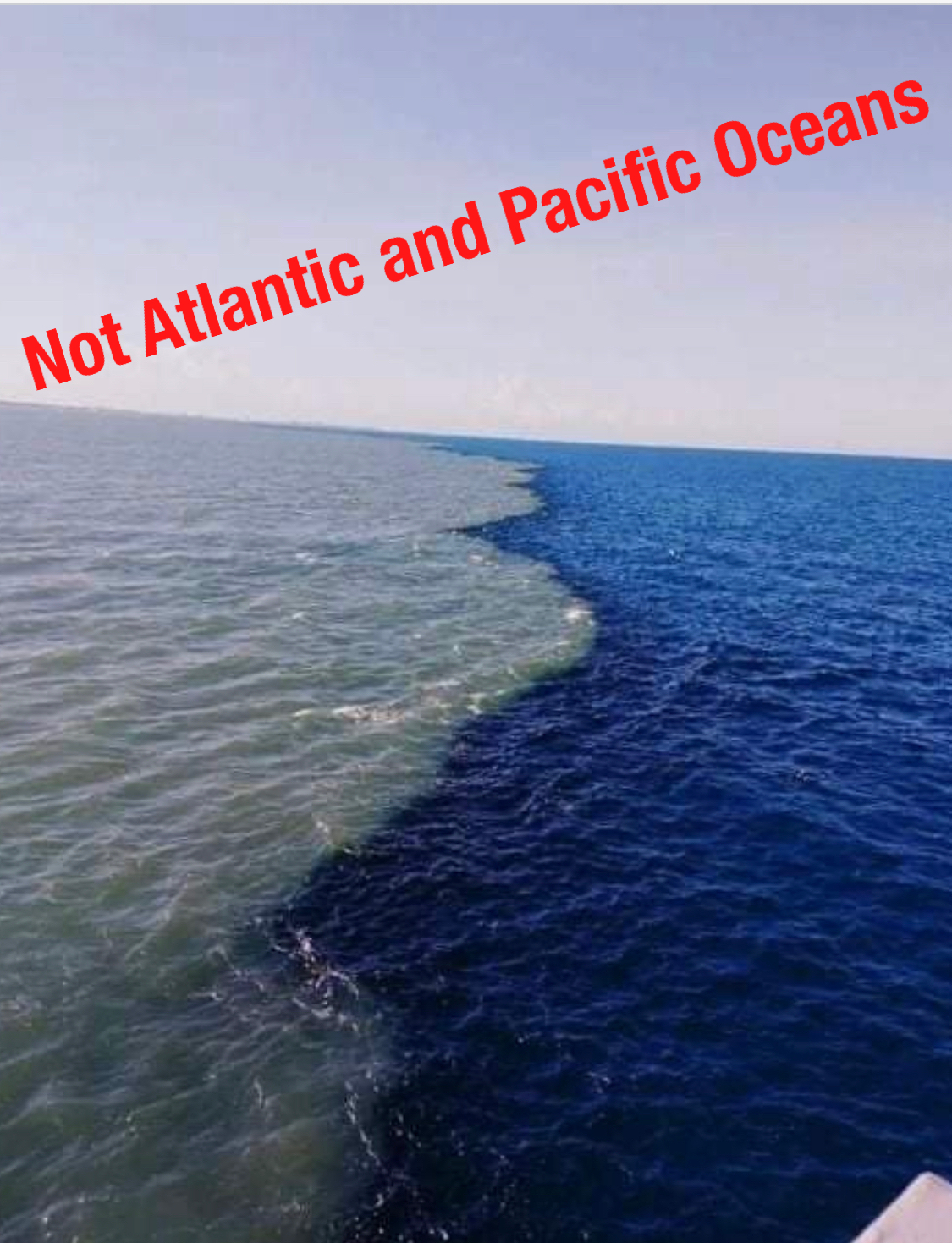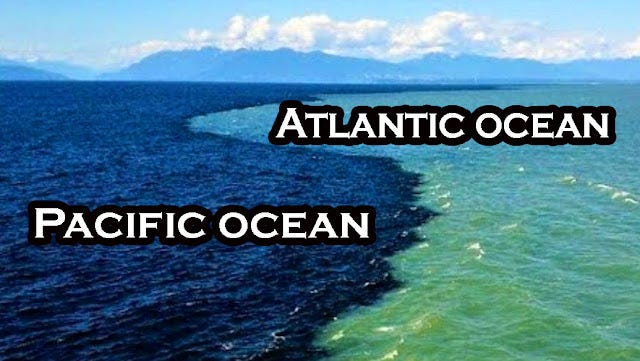Why Dont Atlantic And Pacific Ocean Mix

Ever seen those videos of the Atlantic and Pacific oceans meeting? It looks like two different worlds crashing together. It's like the ultimate showdown of the seas! But why don't they just, you know, blend right in?
It's a pretty cool sight, right? You see this distinct line. On one side, maybe a darker, bluer hue. On the other, perhaps a lighter, greener shade. It's not quite a perfect separation like someone drew a line, but it's definitely noticeable!
Why the Hesitation?
So, what's the deal? Are the oceans just being stubborn? Well, it's a bit more complicated than that. Several factors keep these watery giants somewhat separated. Let's dive in!
Density Differences: A Salty Story
Think about making a salad dressing. Oil and vinegar don't mix easily, right? That's because of density. Ocean water also has density differences.
The Atlantic tends to be saltier than the Pacific. More salt equals denser water. Denser water likes to sink, while less dense water floats.
Rainfall and river runoff can affect salinity too. Areas with heavy rain or lots of rivers flowing in will have less salty (and thus less dense) water. This impacts how well the waters mix.
Temperature Tantrums
Temperature also plays a role. Cold water is denser than warm water. The Atlantic often has colder currents coming down from the Arctic.
These chilly currents bump into the warmer waters of the Pacific. And guess what? They don't exactly want to cuddle up and become one big lukewarm sea.
Current Chaos: The Ocean's Highway
Ocean currents are like underwater highways. They're constantly moving water around the globe. These currents can act as barriers.
They push the different water masses against each other. Think of it as two teams playing tug-of-war with the ocean as the rope. The mixing is minimized by the opposing forces.
Is it a Perfect Wall?
Okay, so they don't perfectly mix, but it's not like a brick wall divides them. There's still some mingling going on. It’s a gradual process.
Over time, some mixing does occur. It's just that the differences in density, temperature, and currents slow it way down. It's more like a slow dance than a wild party.
Why is This So Cool?
Let's be honest, it's just visually fascinating! It's a reminder of how powerful and complex our planet is. Mother Nature showing off her skills.
It makes you think about the vastness of the oceans. And how they are connected, yet distinct. It's a watery puzzle that scientists are still trying to fully understand.
Plus, it's a great excuse to learn something new. Who knew oceanography could be so interesting? You might even impress your friends at your next trivia night!
Go See it for Yourself?
Want to witness this phenomenon? The most famous spot to observe this meeting is near Cape Horn in South America.
Keep in mind that it's not always guaranteed you'll see a super-defined line. Weather conditions and the time of year can affect the visibility. But the adventure is worth it!
So next time you see a picture or video of these oceans meeting, you'll know the science behind the spectacle. You'll also appreciate just how awesome our planet is!


















